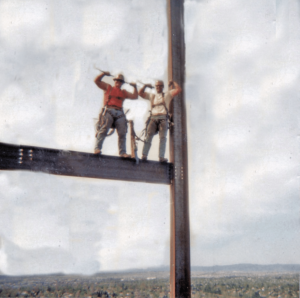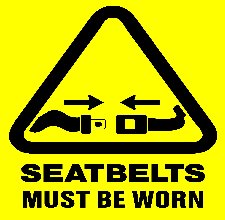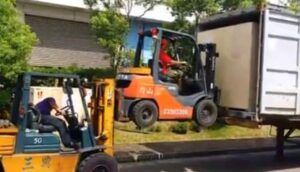Regardless of which exposure control method is used, all construction employers covered by the standard are required to:
Continue readingCOVID 19- A Novel Crisis
I am the husband to a wife that works long hours at an emergency room in a suburb of Denver. I am the safety consultant to many companies looking for answers and reassurances during this novel crisis.
Continue readingUnderstanding OSHA’s Weighted Inspection System
In 2015 OSHA moved to a weighted system, which assigned enforcement units (EU’s) to each inspection.
Continue readingFireworks! Stay safe this holiday season.
If you’re like me, you love this time of the year. The weather is warmer, friends and family get to enjoy the outdoors. On most evenings in my neighborhood you can smell the happiness from the grills. Some nights it’s hamburgers and hotdogs, others it’s steak. This is the time of year when children have no worries, just fun times with their friends and no fear of school tomorrow. It’s also the time of year when we begin to hear the inevitable bang and pop coming from some distant house. We know what that noise is, the pre 4th of July firework shows.
As a kid I remember me and my friends enjoying bottle rockets, black cats, and the random M80. We were out at all hours; I’m sure making sleep difficult for all my poor neighbors. Looking back on it, I realize how lucky we were. In all my years of messing with fireworks, not one of my friends was ever injured. Not a minor injury, and thankfully not a major injury. Unfortunately, we did set a few fires, destroying a bush here and there. I consider myself very lucky that there was not any major “incident” that follows me today. For others though, they aren’t so lucky.
According to national reports, in 2017 alone there were 8 fatalities and almost 13,000 injuries that required medical attention due to fireworks. The 4th of July is a special for us in America, most of us will spend the evening staring at the skies, enjoying the shows put on by our local communities. But the 4th is not the only night for fireworks, 67% of the injuries occurred from June 16th, 2017 – July 16th, 2017. We usually start having a significant increase in nightly fireworks a couple of weeks prior to the actual holiday and this is the problem.
The shows on the 4th of July are professional and are accompanied by fireman. The shows that are put on in the neighborhoods are usually not. Additionally, depending on the laws where you are, the fireworks are probably illegal. Colorado, where I’m from, does not allow the use of any firework that explode or are intended to leave the ground. I love firework shows, I love the 4th of July, and I enjoy having fun with my friends and family. But when it comes to fireworks, I recommend leaving it to the professionals. But if you are going to use fireworks, here are some recommended safety tips:
- Check your local laws to see what you can and cannot legally use
- Avoid drugs and alcohol if you’re going to set off fireworks.
- Wear safety glasses
- If you’re going to allow children to use fireworks, it should only be done under close adult supervision.
- Do not light them near house, people, or other things that could possibly ignite.
- Never light them indoors.
- Stay away from “duds”. Do not pick up or handle fireworks that don’t explode.
- Keep a hose, extinguisher, or bucket of water close by in case of an accidental fire.
I know some people will be setting off fireworks this year that shouldn’t be. I personally recommend that you sit back and enjoy the show put on by your local community. If you still want to use fireworks and you’re going to have your own show for the neighborhood, then please do it safely.
How to Prepare for and Prevent Workplace Violence
Workplace violence is a real problem in America. According to the US Department Of Labor Occupational Safety and Health Administration, around two million Americans are victims of workplace violence every year. And while certain types of jobs are at higher risk—those who exchange money with the public, especially at night; those who work alone; anyone located in a higher crime area, and anyone whose work takes them to other people’s private homes, to name a few—no one is immune from the risk. Workplace violence can manifest in any business organization, and no matter how good a culture your company has, it’s important to be prepared and proactive.
Zero Tolerance
Begin by instituting a zero tolerance policy. This is something you should make clear to every employee as part of the onboarding process, and on a regular basis as well. Make sure everyone in the company knows that any violent incident, including threats of violence, will be dealt with swiftly and severely and will result in the guilty party’s termination. Letting this be known will encourage employees to be mindful of their actions while also helping the company at large to feel more safe and protected as they work.
Employee Training
 One of the most effective ways to counter the threat of workplace violence is with effective employee training. By giving your employees the tools to manage fraught encounters, you’ll be contributing directly toward the safety of your company.
One of the most effective ways to counter the threat of workplace violence is with effective employee training. By giving your employees the tools to manage fraught encounters, you’ll be contributing directly toward the safety of your company.
Of course, your training program should include informing employees of the company’s policies toward threats and violence and making them aware of the consequences of such actions. But there’s more for them to do. Situational awareness can help them learn to recognize potential threats before they manifest, and conflict resolution strategies can help them de-escalate situations and prevent violence before it begins. You can also provide coping strategies for stress and anger, two emotions that often arise in workplaces and have been known to trigger violence.
Security
Clear security measures can help protect your workplace from the threat of violence. There are several steps you can take to help make your company a safer place to work, including:
-
- Limiting the amount of money kept on the premises, if your employees are in a transactional role.
-
- Investing in protective equipment like security cameras and silent alarms.
- Ensure that good exterior lighting is provided, so employees are not walking to their cars in the dark.
If an incident of workplace violence does occur, your priority after securing the safety your people should be to help them through any trauma. Making counseling accessible to your employees after violent incident can help them recover and put it behind them.
TIME TO POST YOUR RECORDS
In case you were unaware or have let the time get away from you and you forgot, here’s your friendly reminder from your friends at Trivent Safety. It’s time for you to conspicuously post your OSHA 300A logs for your employees to review. These logs need to be posted from February 1st until the last day of April. This is not a new rule and is different from the electronic recordkeeping rule which is also about to become a priority. Every company required to maintain injury/illness logs must post this document. OSHA 300A forms, in addition to being posted conspicuously, need to be electronically filed with OSHA by March 2nd. This requirement is for establishments that have 250 or more employees or for companies in certain industries with 20 – 249 employees. To review the list and see if you company is required to report, please follow this link OSHA. If you have any questions regarding electronic recordkeeping OSHA has a good FAQ page or feel free to call us (800) 819-6092.
Some changes to the recordkeeping rule that should be noted. Establishments with 250 or more employees no longer are required to electronically submit their 300 or 301 forms along with their 300A. These establishments are required to maintain the hard copy throughout the year and have available upon request but again, you are not required to submit them electronically.
In years past, electronic documents needed to be filed in July. This has changed and March 2nd is the date that you are required to have the 300A filed. Failure to meet this deadline is considered nonreporting and could result in an OSHA citation.
Please ensure that you post a hardcopy of your 300A by February 1st and for those companies that are required to, upload the 300A electronically to OSHA.
If you have questions regarding this or any safety needs, feel free to call us.
Is the Nano Technology used in Building Materials Safe?
“Some of the nanoparticles that could be used for these features are nano silica (silica fume)”
Continue readingBUSINESS OWNER & MANAGER CHARGED WITH MANSLAUGHTER
Earlier this year, in San Francisco there were two people charged with involuntary manslaughter in the death of an employee that was crushed while operating a forklift that he had not been formally trained or certified to operate. All powered industrial truck operators must be trained and certified in accordance with OSHA 1926.602 (d). Alfred Lee, owner of Good View Roofing and Building Supply Corp., and manager Alan Chan were charged with manslaughter in the death of employee Hua Quing Ruan. The accident occurred two years earlier in 2016 when the 60-year-old worker tipped over the forklift while attempting to load a bag of mortar mix while traveling down a loading dock ramp with a wooden pallet into a customer’s car. In transit the bag fell off the pallet and blocked the front wheel of the forklift. The worker then attempted to back away from the fallen mortar bag and backed off the side of the ramp and tipped the lift over. Surveillance video shows the employee trying to jump out of the way of the falling lift, however he was not able to get clear and was hit and crushed by the lift.
According to the Cal/OSHA investigators the employee was not wearing his seat belt and it played a significant factor in his death. In addition, the employee had no formal forklift training and was not certified to operate the lift. “When employers take workplace safety shortcuts, it’s employees that suffer,” District Attorney George Gascón said in a statement.
OSHA says, 70 percent of workplace accidents can be avoided with proper training and safety procedures. NIOSH states that the three most common types of injuries occur when: A forklift overturns; workers are struck, crushed, or pinned by a forklift; and workers fall from a forklift.
Tips on how to avoid accidents and near misses when operating a forklift:
- • Give your forklift a thorough inspection prior to use
• Only operate a forklift if you are authorized to do so
• Always use your seatbelt
• Become familiar with the features and functions of each forklift you operate - • Only pick up a load when you are sure it is stable
• Know and do not exceed the rated load capacity of your forklift
• Understand and know how to use your load capacity chart
NOT KNOWING THIS …
CAN LEAD TO THIS!
Requirements for Retraining and
Refresher training is required when:
• There has been an unsafe operation
• An accident or near miss
• An evaluation indicates that the operator is not capable of performing the assigned duties
• A new type of truck has been introduced into the workplace
• There has been three years since operators last evaluation
It is unfortunate events like this one that illustration the importance of getting your people the training they need to do the job as informed, safe workers. It has been said that the OSHA standards have been written in the blood of those that have come before us, before a standard was developed. Always be sure that workers who use heavy equipment have the experience and training needed to operate their machine safely. Lets protect our workers and the neighboring trades onsite from needless incidents and accidents that are preventable by receiving proper training!
NEED YOUR PEOPLE CERTIFIED?
Are Your Riggers Qualified?
Quick question for you, do you know what the total sling capacity of two ½” EIPS / IWRC wire rope slings choked at 45 degrees is good for? More importantly does the person you have rigging for you know the answer? The answer may surprise or potentially scare you. If the answer is no, then this is where you want to contact Trivent Safety Consulting and get signed up for the next qualified rigger and signal person training course. Subpart CC requires qualified rigger & signal persons while rigging and signaling construction loads. Our trainers at Trivent Safety Consulting have over 20 years of field experience when it comes to rigging and signaling cranes. We have developed a training course that can get your workers up to speed on how to properly rig materials and flag / signal a crane properly!

Here is how you determine the answer to the original question:
½” EIPS IWRC wire rope sling in a choked configuration has a rated capacity of 3800lbs. At 45 degrees we have a listed sling multiplier of 1.41
3800 X 1.41 = 5358 combined rated lifting capacity.
Would you like to learn more? Follow our link to our next upcoming qualified rigger and signal person class!
Contact us today 1 800-819-6092 or reach us on the web at www.triventsc.com
Understanding OSHA and OSHA Standards
How many of you out there have been on a project or in a facility and the word spread that OSHA was there? For most employers when this happens, the reactions tend to be the same, and what they do is consistent, shut down and stop working. My question to you is, why? I’m not an advocate for stopping work unless you absolutely must. OSHA has a job to do and so do you. Why shut down if you’re not doing anything wrong? The reason is fear, fear of the unknown when OSHA shows up. Why are they here? Am I doing something wrong? Are there any violations? Our pulse begins to race, we may start sweating, our blood pressure rises. All are physiological responses to stress and fear.
Now instead of shutting down our projects because of the unknown, wouldn’t it be better if we’re aware and know the realities of our projects? Do you know the standards that govern your projects? The whole reason OSHA is around is for the development and enforcement of the construction and general industry standards. Standards that were created to help ensure employees go home safe each day.
I’m sure everyone has heard of them, maybe some of you have even read them. Though, most people go their entire career without knowing the rules we’re supposed to follow. As a safety professional, it’s been my responsibility to understand the rules that applied to the people I work with. To help my teams work within these rules and still be productive. These rules are the 1926 Construction and the 1910 General Industry standards. I’m not going to tell you that I’ve read them all, I’m also not going to tell you that I agree with everything that is in the standards. Some of the standards are old and antiquated. Others are written in such a manner that it’s very difficult to understand or to follow. Unfortunately, though, these are the laws we’re given, and we need to learn how to work safely while following them.
To help alleviate our fear and run a safe project, a better understanding of these standards and regulations should be a priority for all employers. You need to understand what rules you are required to follow and what affects your employees. Once you understand what affects your employees, I strongly recommend that you spend the time to educate them on the rules and standards as well.
Fear is a very powerful emotion and can lead us all to make bad choices. The more education and training we can give our employees will lower the fear, which hopefully, will lead to better decisions on our projects and in turn lead to a safer employee and project.
We do not need to fear OSHA showing up on our projects or at our place of business. We need to understand the rules and mitigate the hazards. This understanding comes from training, training and more training.
If you would like to know what OSHA is looking for on your projects, call us at 1(800) 819-6092. We can come to your site to perform a mock OSHA inspection. The first inspection is always free!








